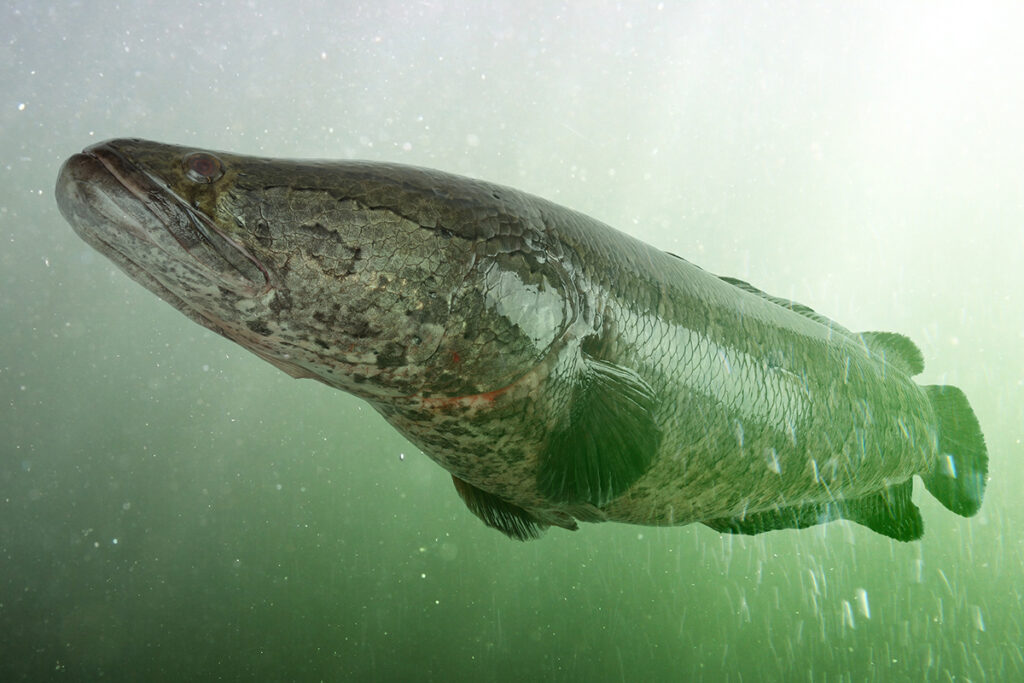Although it’s not likely to infiltrate Kansas City area waterways anytime soon, Missouri state officials are warning local anglers about the Northern snakehead, otherwise known as the “Frankenfish,” an aggressive and invasive species.
“These snakeheads are known to be voracious predators,” says Angela Sokolowski, the invasive species coordinator at the Missouri Department of Conservation. Since 2019, the snakehead has been spotted twice in the state, both times in the southeast corner of Missouri, north of the Arkansas border, according to the MDC.
What to do if you see one? Kill it on site, Sokolowski says. Anglers should either gut the fish or sever its head, according to the MDC. It has been illegal to own, buy or sell a snakehead in Missouri since 2002.
“Because invasive species do tend to spread, there is a chance that they’ll eventually be affecting the St. Louis area,” states the MDC. “It would likely be a much longer time until they affect the Kansas City area.”
However, the MDC says it’s imperative that fishing folks across the state are aware of the problematic fish species. A snakehead in local waterways would feed on other native fish in the area and could potentially change local ecosystems.
“(Invasive species) could lead to a reduction in native fish populations, which would definitely change those ecosystems and directly threaten those (native) species,” Sokolowski says.
The MDC believes the snakehead, originally from east Asia, swam from Arkansas after local farmers began farming snakeheads to sell in New York, when selling the fish was still legal. After floods in Arkansas, the fish were able to escape from those farms and entered natural waterways. Because the fish has also been spotted in Mississippi and Louisiana, officials believe that the species is spreading upwards towards Missouri through the Mississippi river.

The snakehead is similar in appearance to the native bowfin, a non-invasive fish commonly found in Lake Michigan and the Mississippi River. However, there are a few differences to look for. The snakehead is covered in black and brown splotches, has a long anal fin that starts on its stomach and has a pectorial fin right behind its ear. The bowfin, by contrast, is lighter in color, has a black spot at the end of its body and has a short anal fin.
Snakeheads have sharp teeth and are able to “walk” on land for short distances, breathe air and survive out of water for up to four days, according to the Invasive Species Centre. The bowfin is native to many of the same areas as the snakehead, making it common to confuse them.
“We don’t want anglers catching bowfins and killing them thinking they’re snakeheads,” states the MDC.
When a non-native species is introduced to new ecosystems, about ten percent survive and one percent become invasive, according to the United States Environmental Protection Agency. Invasive species are thought to have been involved in about seventy percent of extinctions of native species in this century.
Many invasive species can grow exponentially in number. The female snakehead reaches sexual maturity at two years old and can lay as many as fifteen thousand eggs one to five times a year, according to the Chesapeake Bay Program website.
This is not the first time Missouri has dealt with an invasive species potentially damaging local ecosystems. Last year, jumping Asian carp invaded local waterways, about ninety miles east of Kansas City. The MDC removed more than twenty-five thousand pounds of carp last October.
If you think you’ve spotted the Northern snakehead but aren’t sure what to do, the MDC encourages everyone to report the sighting by visiting mdc.mo.gov.





